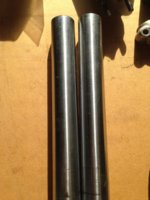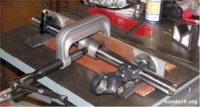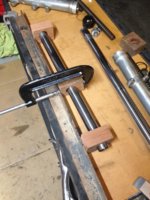apox
XS650 Addict
just order a bunch of stuff from xs650direct.com, got my forks apart and noticed they dont roll on the table very nicely. There is a photo attached of the bottoms together, that is the extreme of the bend on both forks, the gap you see at the top side of the forks. My triple is perfect though, I sat it down on a flat surface and it are true. Are 30 year old accident free forks really straight?... or does everyone have some bend in theirs?
thanks,
Rob
thanks,
Rob



